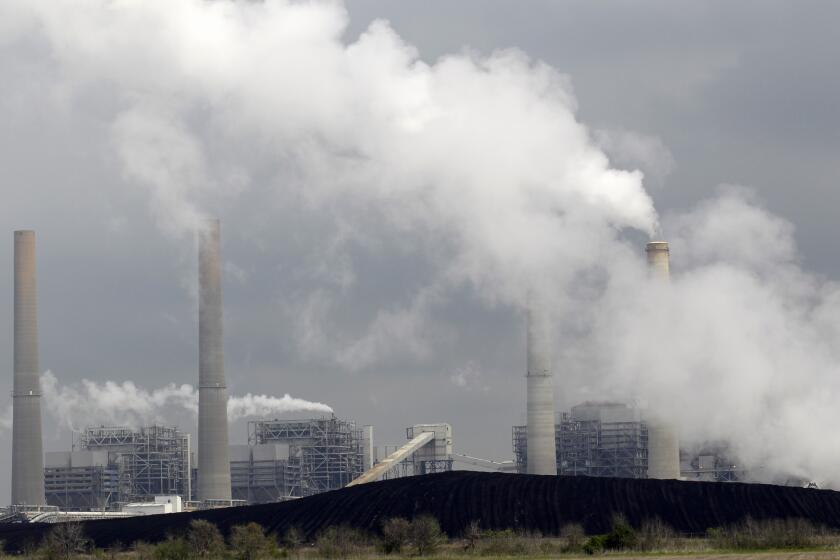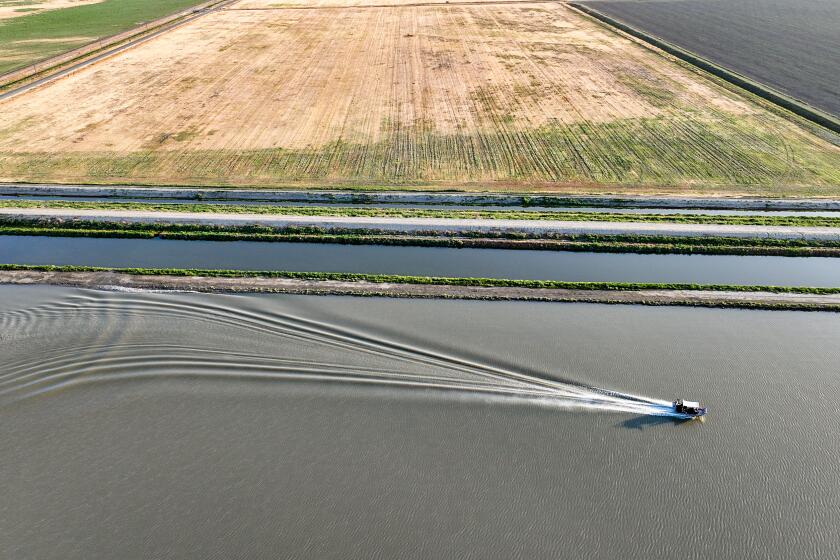One upside to coronavirus scare — a big reduction in China’s greenhouse emissions

China’s far-reaching efforts to control the spread of the new coronavirus have shuttered factories, emptied airports and resulted in a steep drop in carbon emissions and other pollutants. However, analysts caution that the dip in pollution is likely temporary.
“The immediate reduction in emissions is very dramatic,” said Lauri Myllyvirta, lead analyst at the Centre for Research on Energy and Clean Air in Helsinki.
Using data from coal, steel, oil and other industries, Myllyvirta calculated that China’s carbon emissions were 25% lower in the four weeks following the end of the Lunar New Year holiday — roughly the month of February — compared with the same time last year.
He doesn’t think the trend will hold.
“The important question now is how China’s government will respond. To make up for lost economic activity — including after the 2008-09 financial crisis — the government’s usual response is to launch massive stimulus packages focused on polluting smokestack industries,” he said. “That would make the environment worse long term.”
It’s a climate change milestone: The amount of carbon dioxide released by burning fossil fuels will hit 37 billion tons this year, setting another record high. A climate researcher discusses the latest findings.
NASA and the European Space Agency say their pollution-monitoring satellites over China detected big drops since January in nitrogen dioxide, typically produced by motor vehicles, power plants and factories. “There is evidence that the change is at least partly related to the economic slowdown following the outbreak of coronavirus,” NASA said in a statement.
The drop in nitrogen dioxide was first detected around the epicenter of Wuhan, then spread across the country, NASA said.
Satellite images published online by NASA on Monday show the noxious cloud hanging over much of China virtually disappearing between Jan. 1 and Feb. 25.
For the moment, residents of many of China’s cities are breathing clearer air.
Nationwide, the level of nitrogen dioxide was down 42%, and the level of PM2.5 — tiny particle pollution that can penetrate lungs and other organs — was down 27%, according to government monitoring stations.
Beijing residents weren’t so lucky.
The capital’s smog, as measured by PM2.5 levels, was worse this February than the same month last year. Steel plants in regions near Beijing did not shut down, according to Myllyvirta’s industry analysis.
“Beijing has also been unlucky with its weather patterns, with winds blowing pollution toward Beijing,” he said.
Since January, China has imposed wide-ranging travel bans, placed around 70 million people under virtual quarantine and urged those who can to work from home.
As of Monday, China had recorded the vast majority of the world’s novel coronavirus cases — 80,026 — as well as deaths, now standing at 2,912.
“We obviously don’t want a global pandemic to be the driver of people’s choices in how they live and work — people are suffering and dying,” said Kim Cobb, a climate scientist at Georgia Tech University in Atlanta.
Yet she hoped that responses to the new coronavirus, in China and globally, would lead more industries, including scientists, to consider how to fine-tune working remotely.
The American Physical Society, a scientific group, canceled its annual March meeting in Denver “due to rapidly escalating health concerns relating to the spread of the coronavirus disease,” according to the society’s website.
Cobb, who already limits her travel because of concerns about airline carbon emissions, said, “There needs to be an increased discussion in the scientific community around how we can best utilize virtual and conferencing technology” so that work isn’t dependent on long-haul travel.







